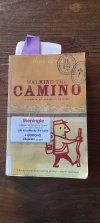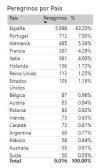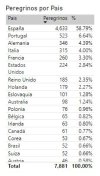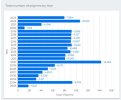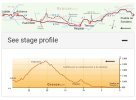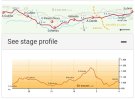A thought provoking article.
The VdlP is an 'interesting' route for sure.
It has a certain mystique about it.
I was certainly apprehensive about walking it, but did a lot of research before hand.
I have not walked the Sanbres section, but only the route from Sevilla to Astorga.
Some thoughts...........
Why do many people not attempt the VdlP?
Maybe because they believe:
- It's long in comparison to other routes and so takes time and a level of commitment.
- The stages can be long, often (usually) without intermediate facilities.
- The landscape can be boring like one long Meseta!
- It will be too lonely.
- Due to the remoteness personal safety might be a concern.
- It will require a high level of fitness and stamina.
- It will require a heavy pack for additional gear, food, water.......
The Reality, for me at least.
- Yes it's long, but that was part of the appeal. Most of the Pligrims I met were walking about 1,000 kms.
- The stages 'appear' long but there are many options. The Logistics and Planning requires a bit more thought than routes like the Frances, but I managed to keep all my days below 25 kms, bar 2 or 3.
- What surprised me was the quality and ease of the walking. Yes it's a long way, but much of the walking is on the flat or gentle hills and much on natural paths. The walking was a joy.
- The landscape was amazing and varied. Sure, a lot is flat and open, but I loved that. And there is a mix of forests, lush farmland, paddocks full of animals. It was a delight. Even the long stretch out of Salamanca past the prison was a nice walk on a great path!
- Personal safety was at the back of my mind a couple of times. (But I'm male) So it was more about hydration on lonely sections, and making sure I did not get injured. A broken ankle climbing up some rocks for a better view could have led to sitting there for hours till someone came a long. So I was much more 'careful'.
- Fitness and stamina? It certainly attracts a few of what I refer to as 'Pro Pilgrms'. Those who are really fit, walk fast with ultralite packs and easily cover 35-40 km sections. One cheery Pilgrim passed me saying "see you in Merida". That was a 46 km walk. No way Jose! (2 days for me) But this relatively unfit and overweight Pilgrim managed just fine walking shorter days..
- Pack weight? I envy those who can walk with what looked like a 12-15 L pack! (P from Switzerland) But you just need to be sensible and pack light, and be able to carry 2 litres of water and a snack. (more water if in hot weather)
What will make the VdlP more 'attractive?
I think those who love it, love it because it's fairly remote, offers wonderful solitude and is a bit of a challenge.
But that does not help local businesses I suppose.
Will benches and better signage draw more Pilgrims? I doubt it. I'm sure they don't influence route choice. By comparison, I have never seen so many signs and benches as on the Invierno! but (a) I didn't need them and (b) there were hardly any Pilgrims on the route.
So what does influence route choice?
It's probbaly things like more accomodation options, and luggage transfer.
I did meet three Spanish Pilgrims transferring bags each day by taxi. Get's expensive!
For any investment in additional infrastructure to be justified, such as providing more Albergues, more private accomodation or services such as luggage transport, it might require the Pilgrim numbers to increase exponentially. A bit of a cart and horse scenario?
Build it and they will come, or build it as slow organic growth justifies it?
We are indeed very lucky that there are so many different Camino routes to suit all tastes.
After the VdlP I certainly have a taste for the remote ones now, and hope to work through a few more in years to come.
There are some routes I'm sure that will always offer that remoteness and solitude that many seek.
Having walked the Invierno recently, and hardly meeting a single Pilgrim in 2 weeks, I loved that too.
But that route, because of it's location near Santiago, wonderful scenary, distance and as an alternative 'finish' to the Frances is sure to draw much larger numbers of Pilgrims in the next few years. Walk it while you can.


 www.zamora24horas.com
www.zamora24horas.com


















